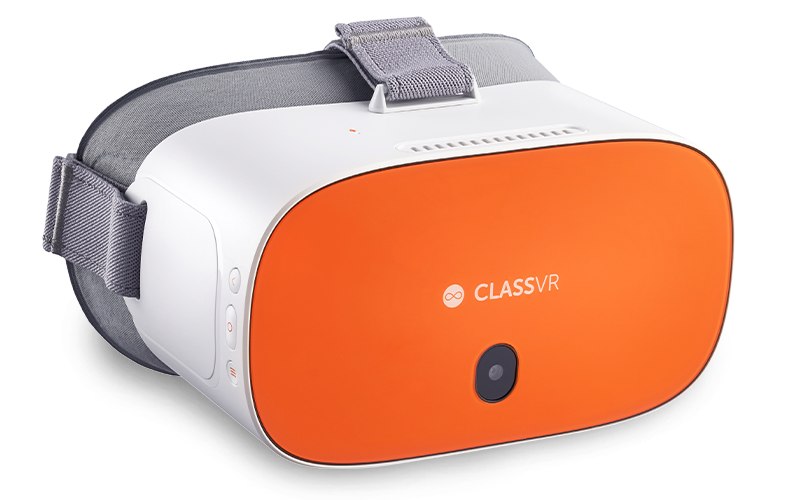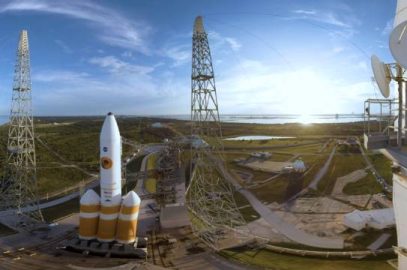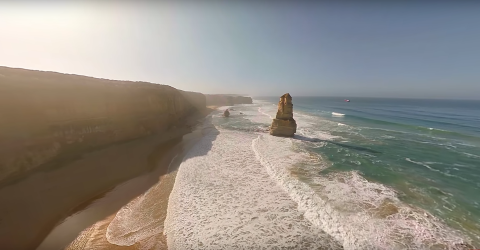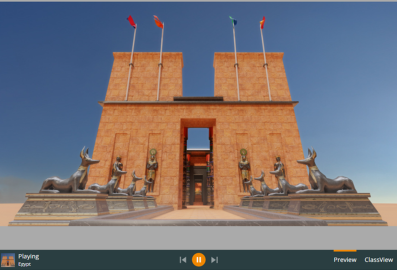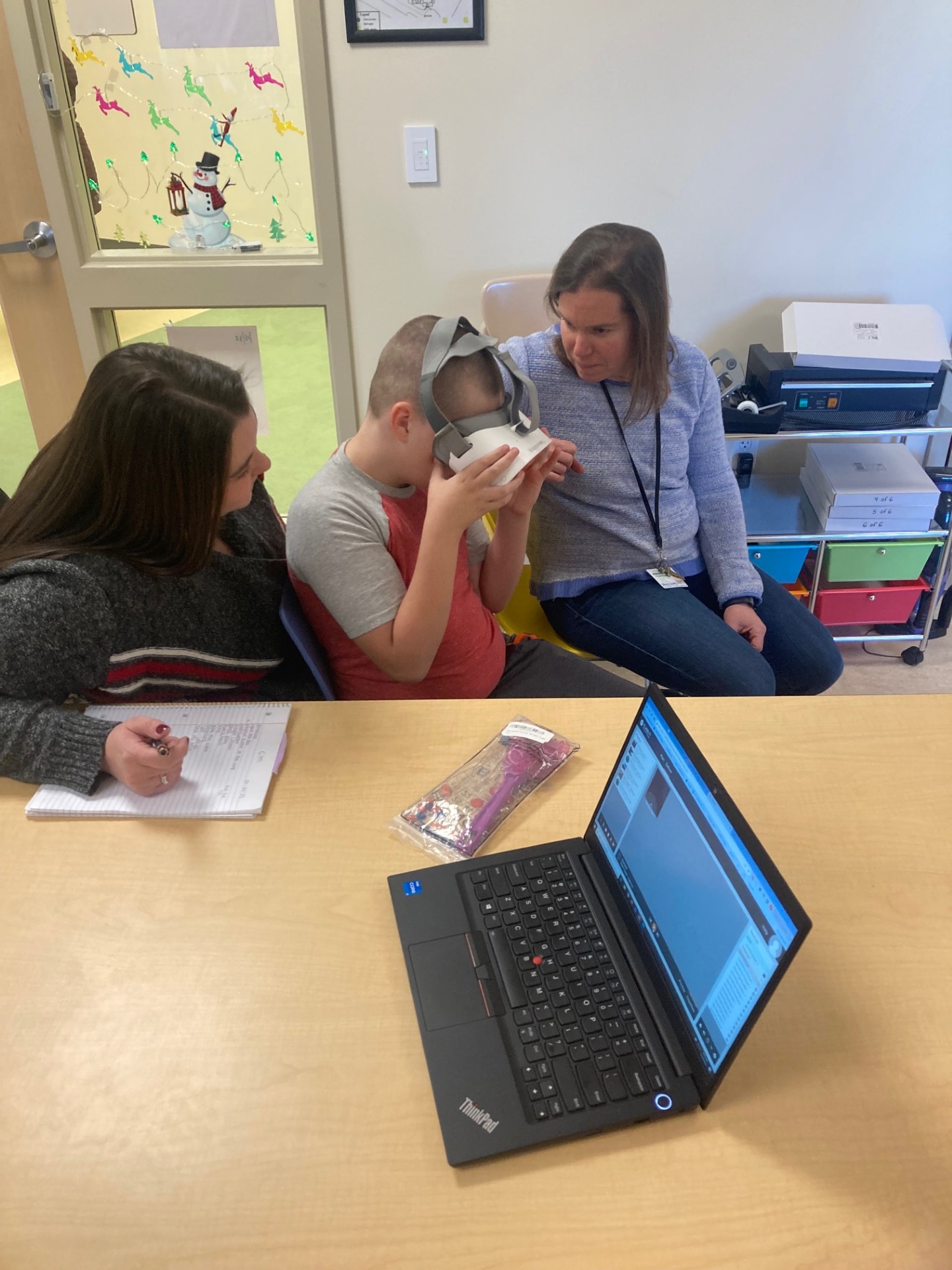
Spaulding Academy & Family Services is a small, non-profit special education school and residential facility serving students with a wide range of abilities, including many who are on the autism spectrum, some who have medical or physical limitations, some who have been diagnosed with other learning challenges, and some who have been victims of trauma, abuse, or neglect. Our students are with us because they require more support than their previous schools were able to provide, and it is central to our philosophy that our programs and offerings meet the needs of all of our students.
Since our last blog post, we’ve been hard at work exploring new and exciting ways of using ClassVR to support our students! The first step in achieving this was continuing to leverage our on-campus experts. We have an extremely talented team of administrators, board certified behavior analysts & clinicians, social workers, speech-language pathologists, occupational & physical therapists, teachers, medical experts, and staff who all bring a unique perspective to this project, and their input and support has allowed us to thoughtfully expand the scope and methods of our ClassVR implementations.
Table of contents
ClassVR in Staff Training and Social-Emotional Learning
In the past year, our school has undergone a remarkable cultural shift that centers SEL and the Choose Love program within our curriculum and everyday operation. This shift has already provided results that have been inspiring to witness among both students and staff alike, and we were very interested in exploring how to leverage virtual reality (VR) in this area.
One important thing we’ve decided to do is use ClassVR as part of our staff training process. Our interest is in using VR to strengthen compassion, empathy, and perspective-taking among new staff. We identified a video by the National Autistic Society (Autism TMI), which consulted people with autism to create a first-person simulation of what sensory overload feels like for them, and we are now using that VR experience on ClassVR headsets to help train and inform new school staff. It’s difficult for a 'neurotypical' person to truly understand the perspective of those who are neurodiverse, but this immersive experience brings tremendous value in helping our staff understand and empathize with our students - as a result it helps staff provide better service and support for them.
After staff experience the video, we have a discussion about how this new information can impact the way we approach supporting our students in given moments, and how we can proactively take steps to avoid those situations or to offer solutions in the moment - that could mean rethinking our learning spaces entirely, or proactively offering the student sensory tools like noise-reducing headphones, or anything in between. We’re also working with our school BCBAs and others to begin filming custom 360° perspective-taking videos for use in staff training, in which we record simulated student-staff interactions with the intent of showing the trainee a student’s perspective during various situations. The hope is that this will further develop empathy and understanding among our staff!
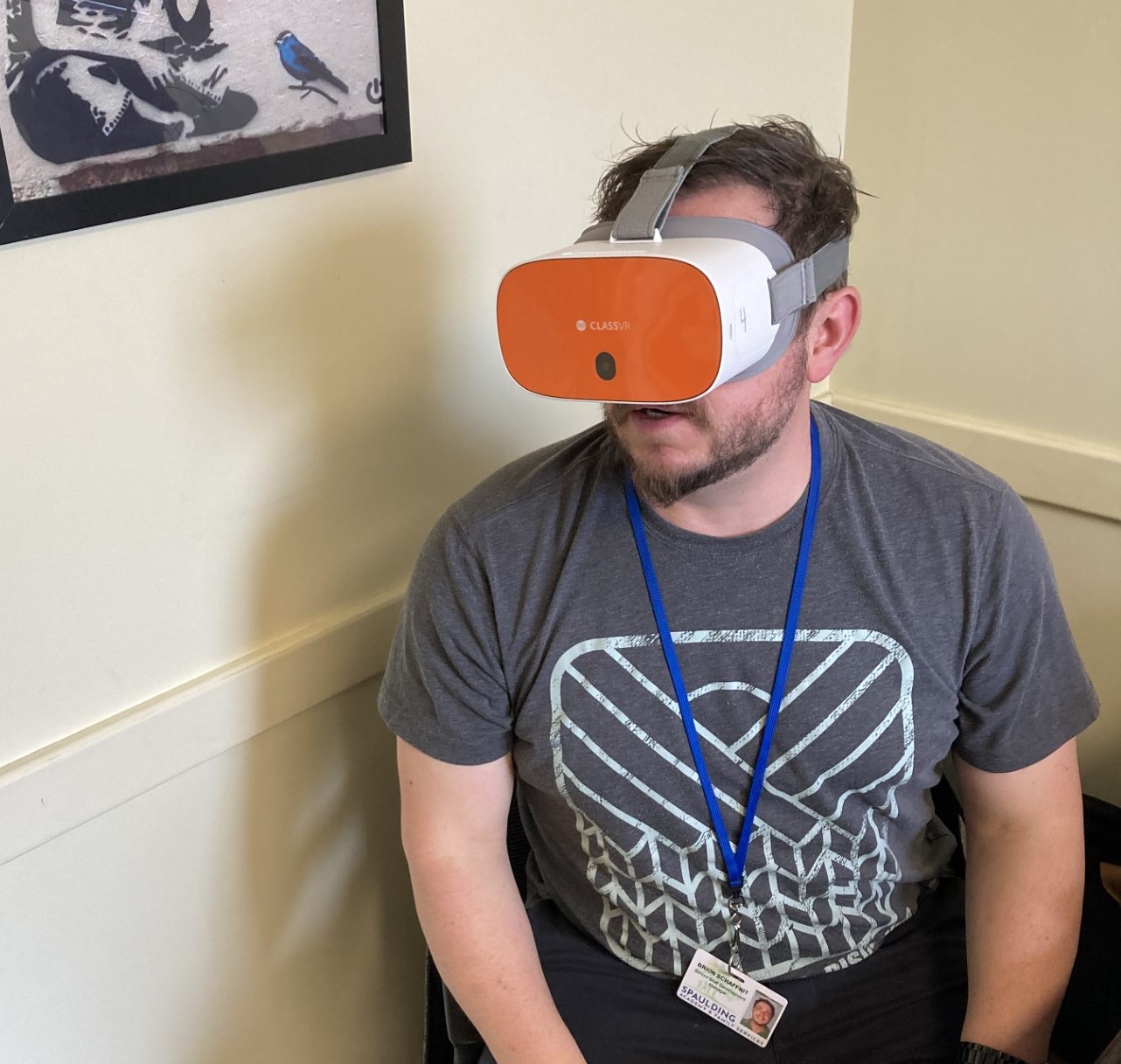
With that same logic in mind, we're also continuing to explore VR strategies in the world of SEL for our students. We want to look beyond using the headsets as calming devices, so we're finalizing plans to create and film custom 360° content that also focuses on compassion, empathy, and perspective-taking. We're using various research papers as a jumping-off point, but as usual, our creative and innovative specialists have taken the ideas and run with them to develop solutions that are most likely to work for our specific students.
The starting point will be filming simulated social scenarios in a similar fashion to the perspective-taking strategy mentioned above. Students will be able to experience social situations from specific viewpoints, and the intent is for teachers or clinicians to guide the implementation and elicit feedback from students in the moment, as they’re immersed in the experience. Given our focus on SEL and Choose Love, we’ll be starting with scenarios that involve courage, gratitude, forgiveness, and compassion in action.
We also plan to create student-produced SEL content where students develop materials for other classrooms to engage with. This may take the form of 360-degree videos, which could be anything from a student-produced puppet show to students writing a scene and acting it out, but I'm also interested in having students create and code custom SEL CoSpaces for other students to use. Imagine having students build a ‘Courage Castle’, full of SEL information and videos and coded interactive elements, for younger students to explore and interact with?
ClassVR in Proactive Needs-Management
As highlighted in our last blog post, one of our most established strategies for using ClassVR is in providing vestibular-ocular stimulation for students who require movement to be successful in the classroom. We’ve amassed a library of custom-made and outsourced 360-degree videos that meet the specific needs and interests of specific students, all of which provide different levels of sensory stimulation intended to ‘trick the brain’ into thinking it has received needed movement.
With that in mind, our next step was to identify whether proactive vestibular-ocular VR implementations could lead to overall improvement in behavior and time on task in the classroom. One of our students tended to hit a speed bump at about the same time every day, where they would lose interest in classwork and we would see increases in outburst behaviors. So, every day for two weeks, we implemented ClassVR to provide simulated movement about a half-hour before the typical speed bump - we saw notable decreases in outburst behaviors and notable increases in time on task throughout the rest of each day following VR use!
The next phase is pre-loading headsets with content, customized to the students in each classroom, which will be available to classroom teachers so they can more easily, both proactively and reactively, provide students with immersive content that meets their specific needs. Once the technology is in place, we will continue to use our data collection infrastructure to help us understand whether each implementation is effective.
ClassVR in Medical Applications
Based on research papers from Oxford and others, which show decreased anxiety and pain perception when VR is implemented during routine medical procedures, we began using VR for select students who struggle with things like blood draws and immunizations. This involved significant pre-teaching - we introduced the VR to the student to get them comfortable with the experience and to determine the level of sensory input they prefer, and then we separately introduced the student to the process of the blood draw. That included breaking down the steps of a blood draw and practicing by using fake equipment in a safe environment. These steps allowed the student to be comfortable with both processes when the time came to combine them.
Another specific need we’ve begun to address in the medical space is the fear of unknown or anxiety-inducing spaces, like medical and dental offices. We’ve had several students who have significant anxiety around the dentist, which can lead to refusal to attend appointments or refusal to cooperate when in the office, so we coordinated with our local dental office to film a 360° tour of their entire facility. We’re guided on the tour by their head Dental Hygienists, who meet us at the front door and walk us around while describing each step of the visit, explaining each piece of equipment, and reassuring the viewer (the student) that everything is safe.
We then took it a step further and filmed a second version of the video - in this one, a popular staff member takes the place of the student for a fake dental visit. The viewer watches the staff member as he walks into the office, sits in the chair, goes through a teeth cleaning, and assures the viewer that nothing is painful or scary.
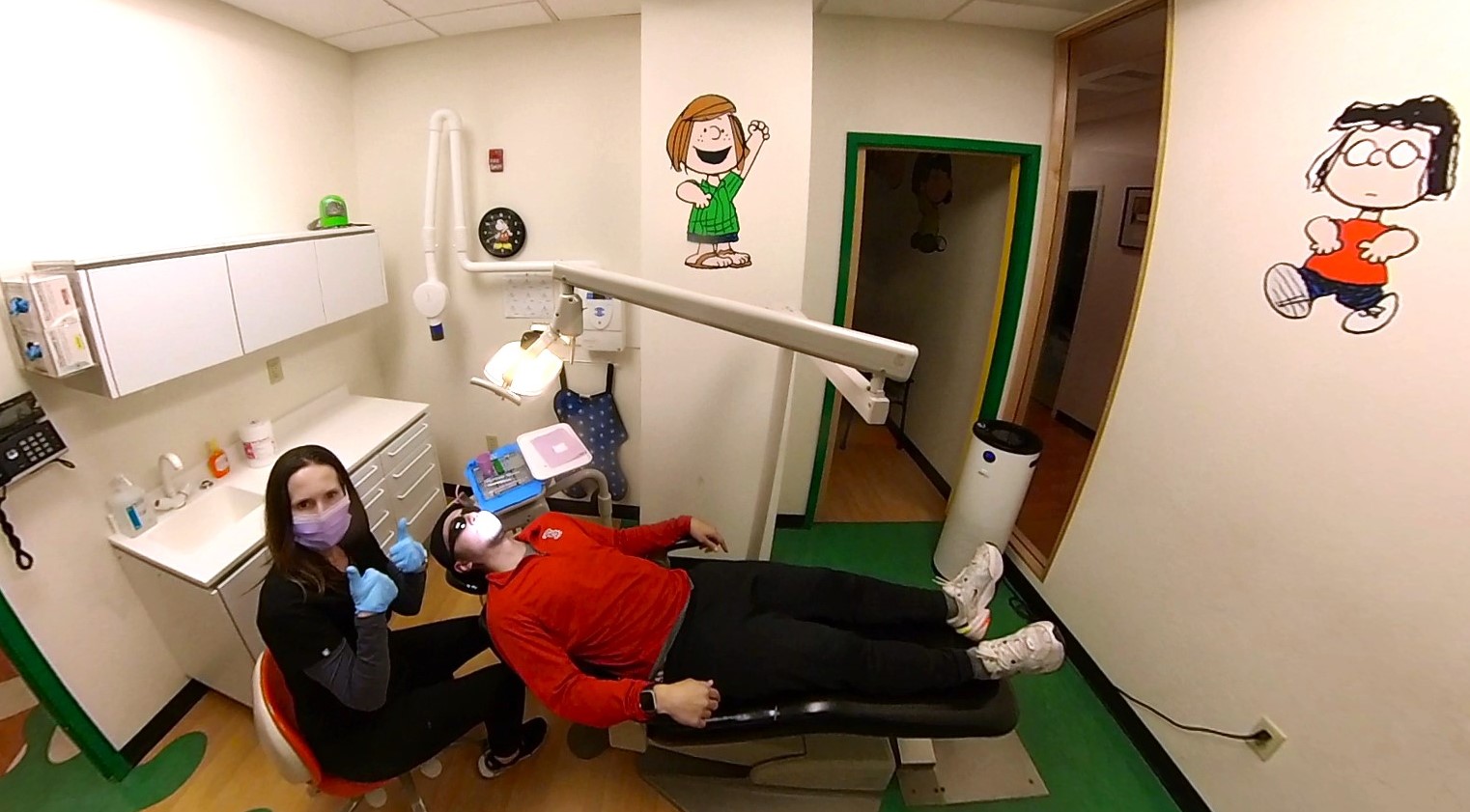
This type of video modeling practice is well-established, but the immersive nature of VR video modeling has proven to be even more successful for our students. We’ve since expanded this strategy to other new or scary places, including filming custom content for students who are being discharged out of Spaulding to new schools (typically in their home districts). In a recent scenario we traveled to a student’s new school and filmed a guided 360-degree walkthrough video of the student’s new environment, including their classroom and other important resources. Transitions like this are scary, sometimes particularly for students with Autism, and the hope is that this strategy will help alleviate some of the anxiety that comes along with them.
Looking Forward
The thing that strikes me personally about all this is the way ClassVR uniquely expands our toolbox to help meet the individual needs of our students. Every day at Spaulding is filled with successes small and large, all of which inspire me, and I’ve found our VR implementations to be among the most interesting and inspiring that I’ve witnessed. There’s something special about a team working together to come up with a new and innovative solution to a persistent problem, and then seeing a student do something they never thought they’d be able to do, or experience something they’ve never experienced before, or smile more than we’ve ever seen them smile.
In the future we will continue to explore new and exciting methods of implementation, always with the goal of meeting the diverse individual needs of our students, and we hope that these ideas help spark other new and innovative ideas for you!
About the Author
Charley Suter, M.Ed is the Director of Technology & Innovation at Spaulding Academy & Family Services, where he has worked and been inspired for 9 years. He also serves on the Board of Directors of New Hampshire’s ISTE Affiliate, NHSTE, where his aim is to bring together the vast expertise that exists among NH technology educators and leaders. He’s a devoted educator, an advocate for equity and inclusion, a tech geek, a privacy proponent, and a lifelong guitar player!
